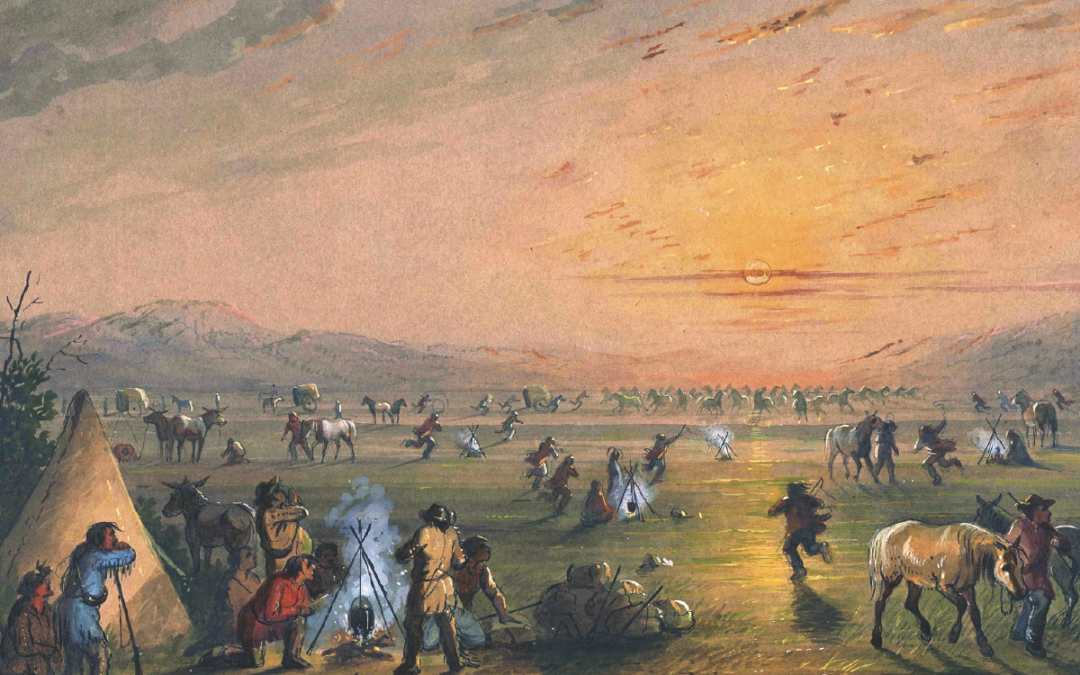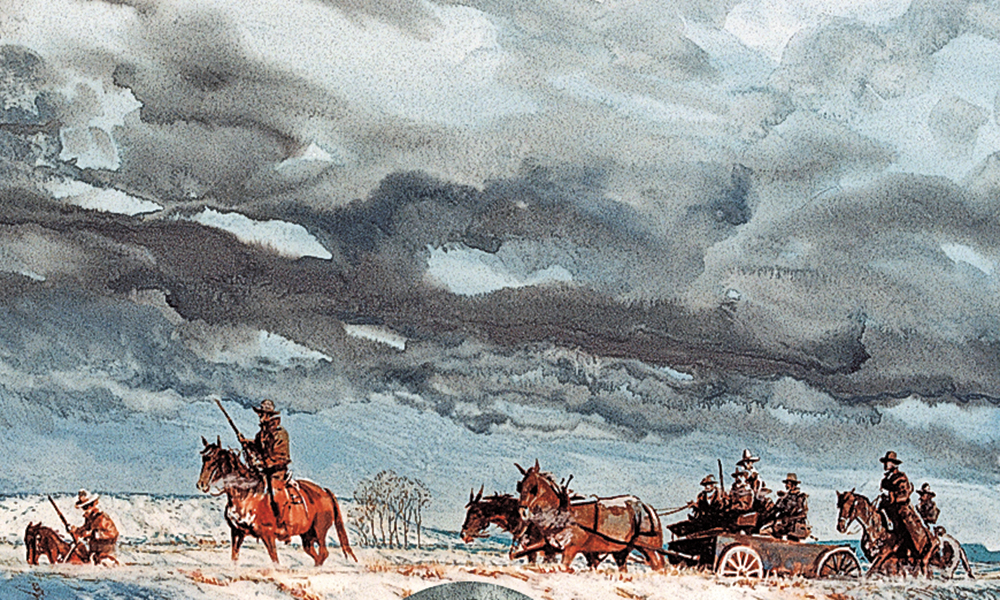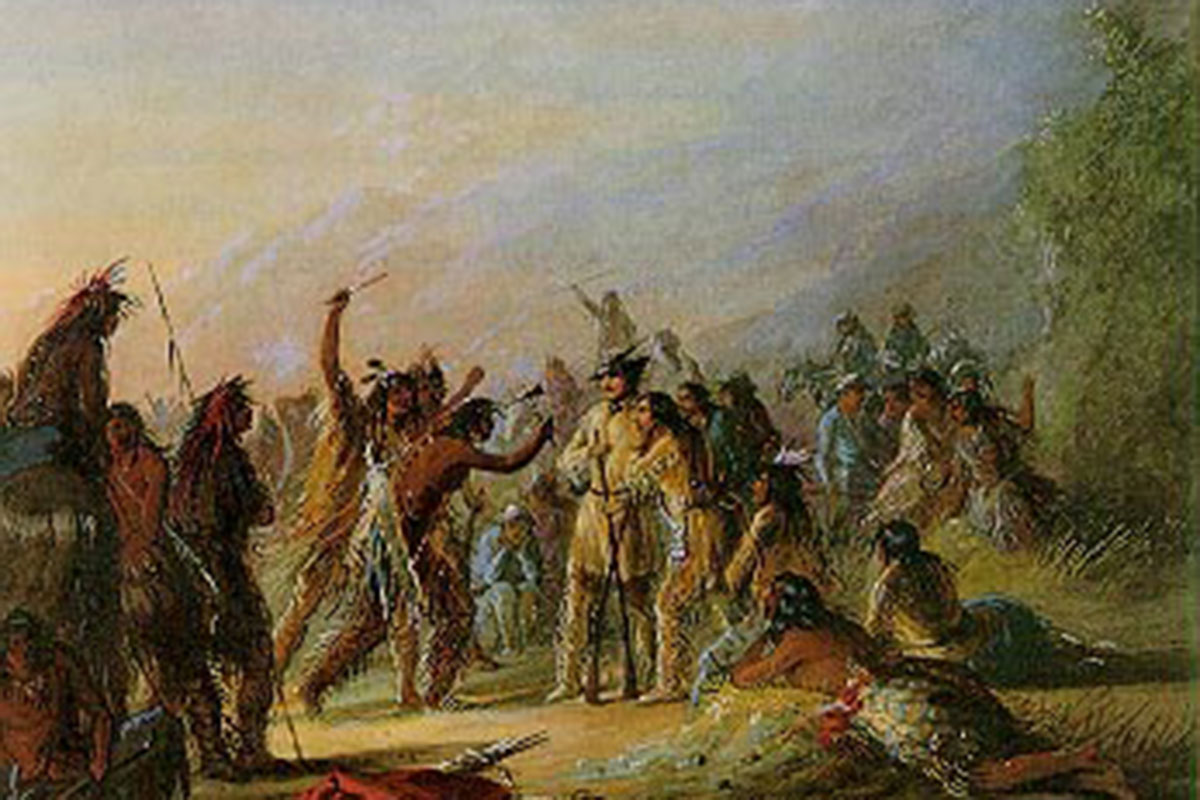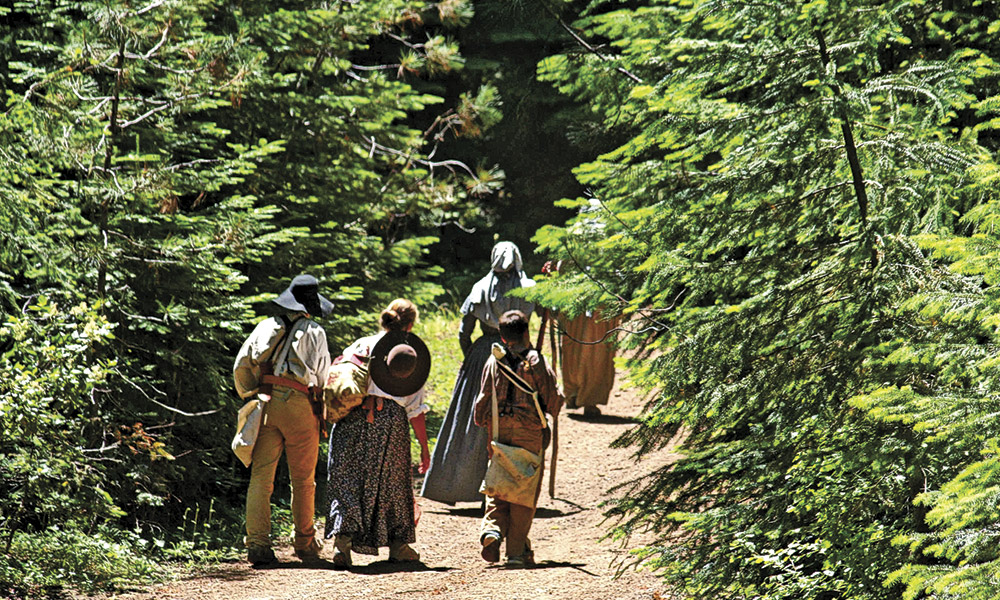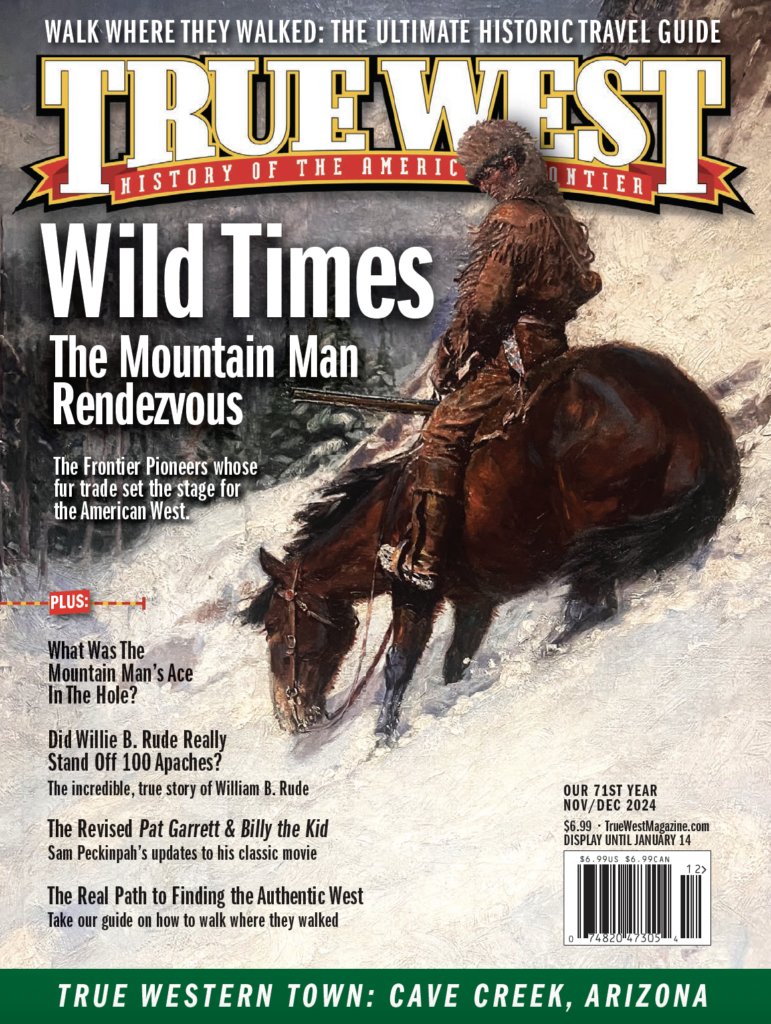More than half of the gatherings of mountain men and fur trade caravans took place in Wyoming, including the first one in 1825 along the Henry’s Fork of the Green River. By far the most popular place for the annual summer rendezvous was in the Upper Green River Valley, not far from present-day Pinedale, with six rendezvous camps in that area.
The Green River Rendezvous is still celebrated in that community with an annual reenactment and mountain man camps, held each year in mid-July.
This summer’s event involved an authentic mountain man camp set up by the American Mountain Men, a group of historians who faithfully adhere to the mountain man era. Everything in their clothing, gear and accoutrements is what would have been available during the period before 1840, when rendezvous ended.
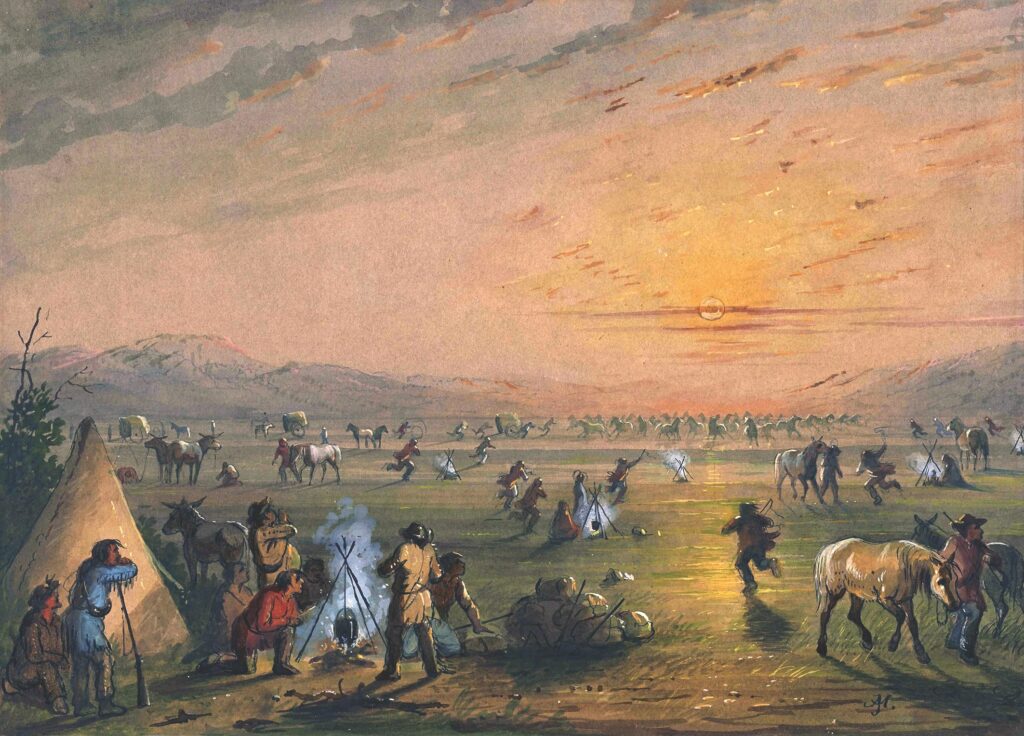
In 1858 Baltimore born artist Alfred Jacob Miller was comissioned to paint 200 watercolors on paper for $12 each. These paintings were rendered from sketches Miller had made during the 1837 Green River Valley rendezvous. Library of Congress
As part of the gathering they not only have an exceptional camp, including one buffalo hide tipi, but they also share information about the era with visitors. Their topics are diverse, ranging from building a hide-covered bullboat to Indian sign language to the etiquette of tipi living to firearms.
Located on grounds adjacent to the Museum of the Mountain Man, the AAM rendezvous site has traders offering items also representing the era pre-1840—from furs to beads, fire-starting kits, weapons (knives and guns) and libations.
In downtown Pinedale, another rendezvous camp has even more traders, with programs ranging from how to shoot a bow and arrow or throw a tomahawk to craft events for children.

North of Pinedale, visit the Trapper’s Point marker, an area atop a bluff with a view overlooking the Green River Valley Rendezvous site. Other nearby monuments commemorate Father Pierre De Smet, who celebrated the first Mass in the area, a monument to Narcissa Whitman and Eliza Spalding, the first White women to attend a rendezvous, and a monument recognizing Pinckney Sublette, another of the family of brothers who came west and left their name on the county.
The goods for each rendezvous were brought overland by caravans of horses and mules carrying heavy packs of goods. They organized goods in St. Louis and traveled overland following the Platte River, then the North Platte and crossing the South Pass that had been identified by Robert Stuart when he crossed it in 1812, traveling to St. Louis from the West.
The locations for the rendezvous were established each year for the following year, so everyone would know where to gather.
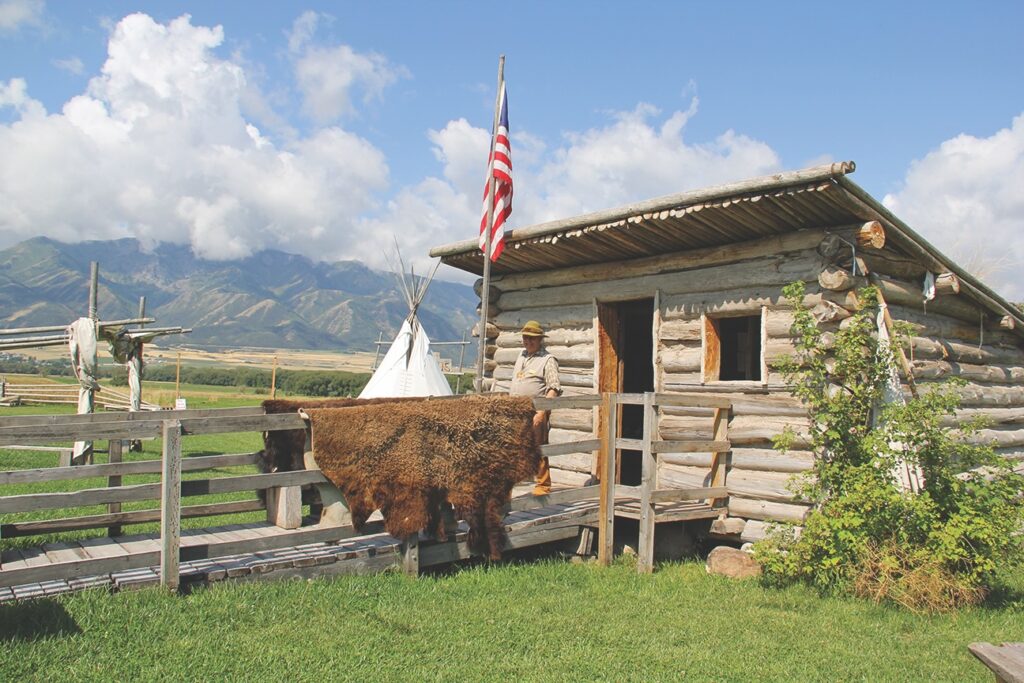
Rendezvous was in Utah for its second, third and fourth years, with gatherings in Cache Valley in 1826 and at Bear Lake in 1827 and 1828.
The American West Heritage Center in Wellsville, Utah, recognizes the Cache Valley rendezvous and the mountain man era with an annual gathering in the spring including a trader’s row, primitive skills demonstrations such as flint knapping, bullet making, starting a fire with flint and steel and other activities.
In 1829, rendezvous moved north to Pierre’s Hole (today’s Teton Valley), near Driggs, Idaho, and the mountain men returned there in 1832. More than a thousand mountain men and Indians had gathered for the 1832 rendezvous when William Sublette arrived in early July with a hundred mules carrying merchandise.
Thomas Fitzpatrick reached the gathering late because he’d been attacked by some Gros Ventre Indians and had to evade them by hiding in the mountains for five days. That was a clue that there was tension in the mountain trade with some tribes.
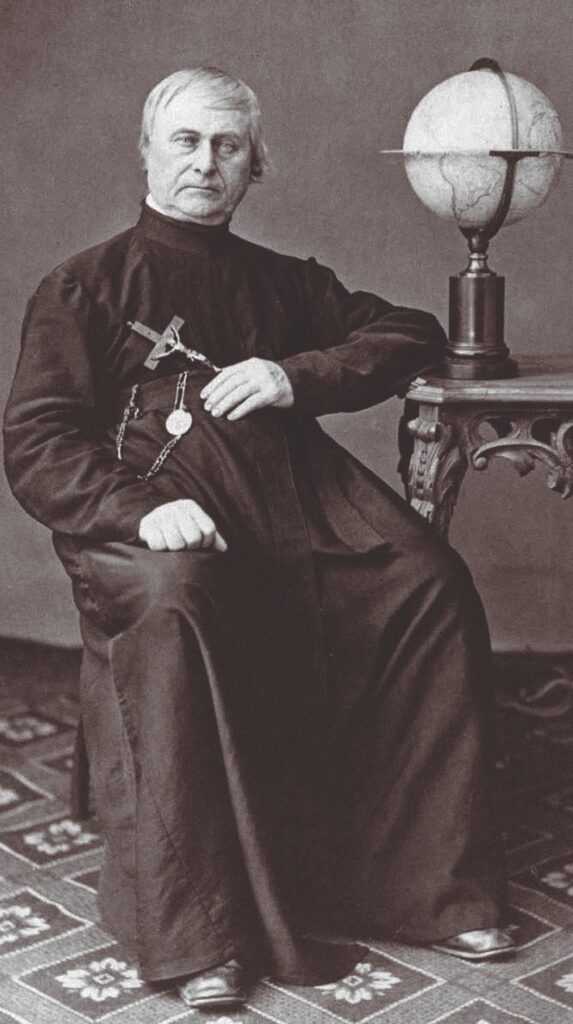
When the 1832 rendezvous concluded, Milton Sublette, a brother of William, led a party of trappers from Pierre’s Hole, but they only got about six or eight miles before setting up a nightly camp. The following day Gros Ventre and Blackfoot tribesmen approached Sublette’s camp. Being outnumbered by the mountain men, those tribal warriors retreated.
When a Flathead chief and one of the trappers went to meet the Blackfoot while exhibiting a white flag of truce, they killed a tribal headman who’d come out to meet them. This caused the Blackfoot and Gros Ventres to quickly retreat and prepare a rough fortification.
William Sublette soon learned of the incident and with many men he rode to the area where brother Milton had camped, and they engaged the Blackfoot. What became known as the Battle of Pierre’s Hole led to the deaths of five trappers, seven American Indians fighting with them, and perhaps 26 Blackfoot tribal members.
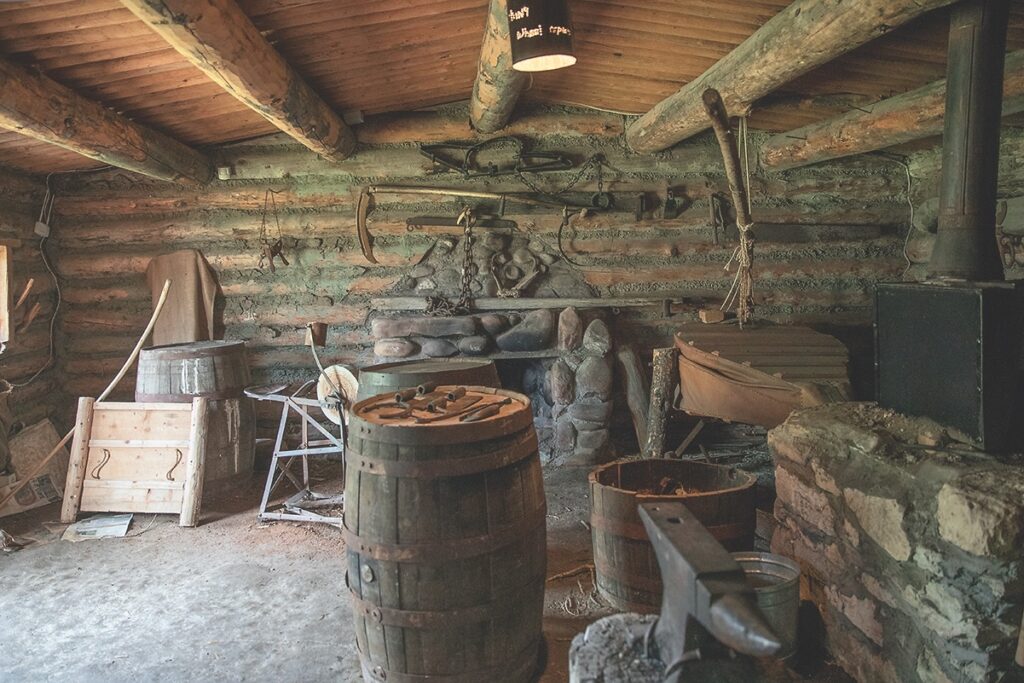
Pierre’s Hole was a regular trapping location, but so was the hole to the east, a location named for David Jackson. Our route takes us back into Wyoming and through Jackson’s Hole then across Togwotee Pass and into the Wind River Valley.
The 1830 and 1838 rendezvous were both held on the Popo Agie River in central Wyoming. The 1838 gathering is recognized each year in early July with a modern rendezvous on the site of the original rendezvous in Riverton. Events include shooting competitions, trader’s row, kid’s activities and American Indian singing/drumming.
The first rendezvous took place in southwest Wyoming, and today one of the largest annual gatherings is held over Labor Day weekend at Fort Bridger State Historic Site. The largest of the historic rendezvous attracted two or three thousand participants, so the large-scale event at Fort Bridger is most representative of what it was like at a rendezvous in the 1825 to1840 era.
A Wide Spot in the Road
The Museum of the Fur Trade and Bordeaux Post
Chadron, Nebraska
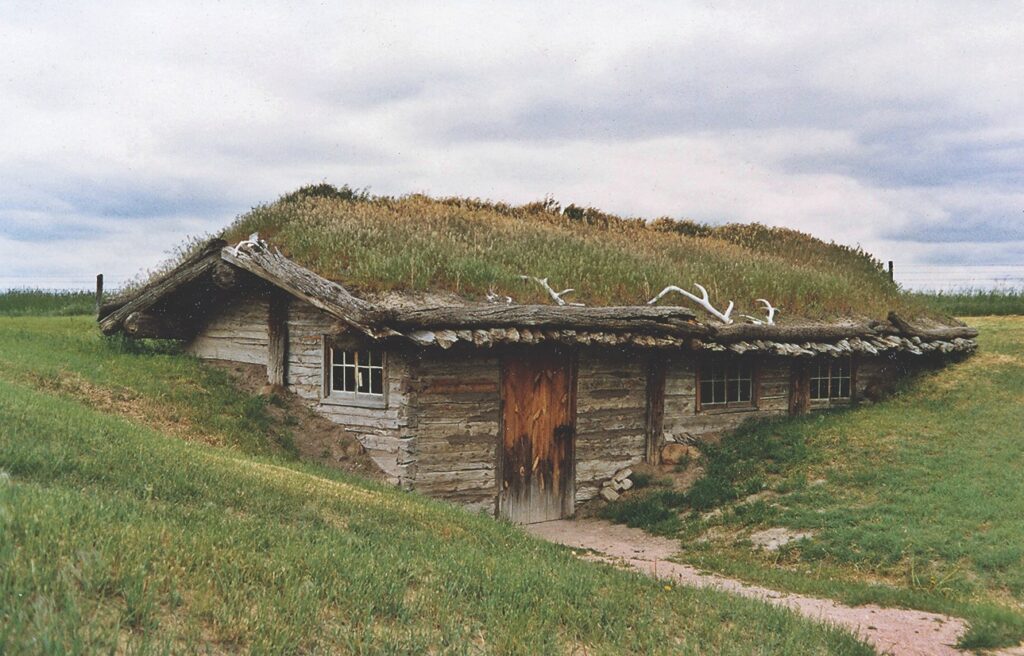
The concept of rendezvous involved fur supply brigades taking goods to the mountain country where the trappers lived and trapped beaver. But there also were places established during the era that were fixed-site posts. The Bordeaux Post is one of them, located at the Museum of the Fur Trade on the east side of Chadron. This outstanding museum has one of the finest displays of fur trade era goods anywhere, ranging from trade cloth to trade beads, traps and tools, firearms and American Indian items, including many pairs of moccasins.
Good Eats & Sleeps
Good Grub: Wind River Brewing Company, Pinedale, Wyoming; Stockman’s Saloon and Steakhouse, Pinedale, Wyoming; The Bunnery, Jackson, Wyoming; Mack’s Inn,
Island Park, Idaho; Angie’s Restaurant, Logan, Utah
Good Lodging: Chambers House B&B, Pinedale, Wyoming; Highline Trail RV Park, Boulder, Wyoming; Teton Valley Cabins, Driggs, Idaho

